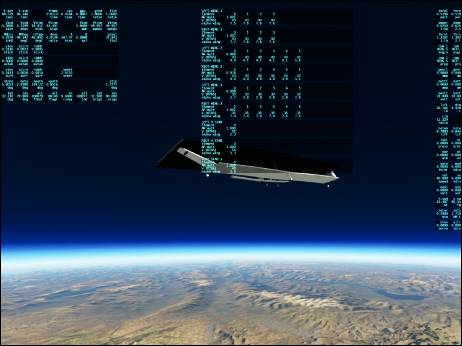
November 7 2021: Dr Narayanan Komerath whose novel invention to reduce global invention -- Glitter Belt – we had reported upon 11 months ago, has released an update on recent developments.
( “Glitter Belt” is a method to deploy and operate an array of ultralight reflective sheets using Unmanned Aerial Vehicles 100,000 feet above the earth. Flying 24-7 for an indefinite period far above winds and clouds, the sheets reflect sunlight back into space at full intensity. "Glitter Belt" is named for how they appear from space.)
Dr Komerath writes: This is about all that can be demonstrated with a 16m solar-powered model; already much more than what I had hoped to demonstrate with this scale. Next step is to develop either the 32m model for routine high-altitude operation (should be easier because more solar cell area), needed to write papers on long-term meteorology and Space/ ground Antenna research (deadline pressure) or go towards the 8m scale model to test at IITM, for proposals (fun). Hopefully both. The 8m model is not expected to self-sustain on solar power, just to get experience of using solar power plus battery power for short, low altitude within visual range flights.
On this one, parameters are balanced: power to props is less than what is generated from the Sun, etc. There is a small positive climb rate of 96 feet me minute as seen on the attached still image. It may look like it is standing still and rotating, but forward speed is 43 knots, or 78 km per hour. So it can counter winds of that magnitude and not be totally blown away. If I go into a descent rather than climbing at 96 feet per minute, I could go somewhat faster if needed. Again, this is the extreme case with the reflector sheet fully deployed, so that the vehicle drag is pretty high. Once it joins several more, the aspect ratio will become less, the weight per unit area will decrease so it will have both power margin to climb or speed up, and the ability to glide very slowly and stay above 60K feet through the night.